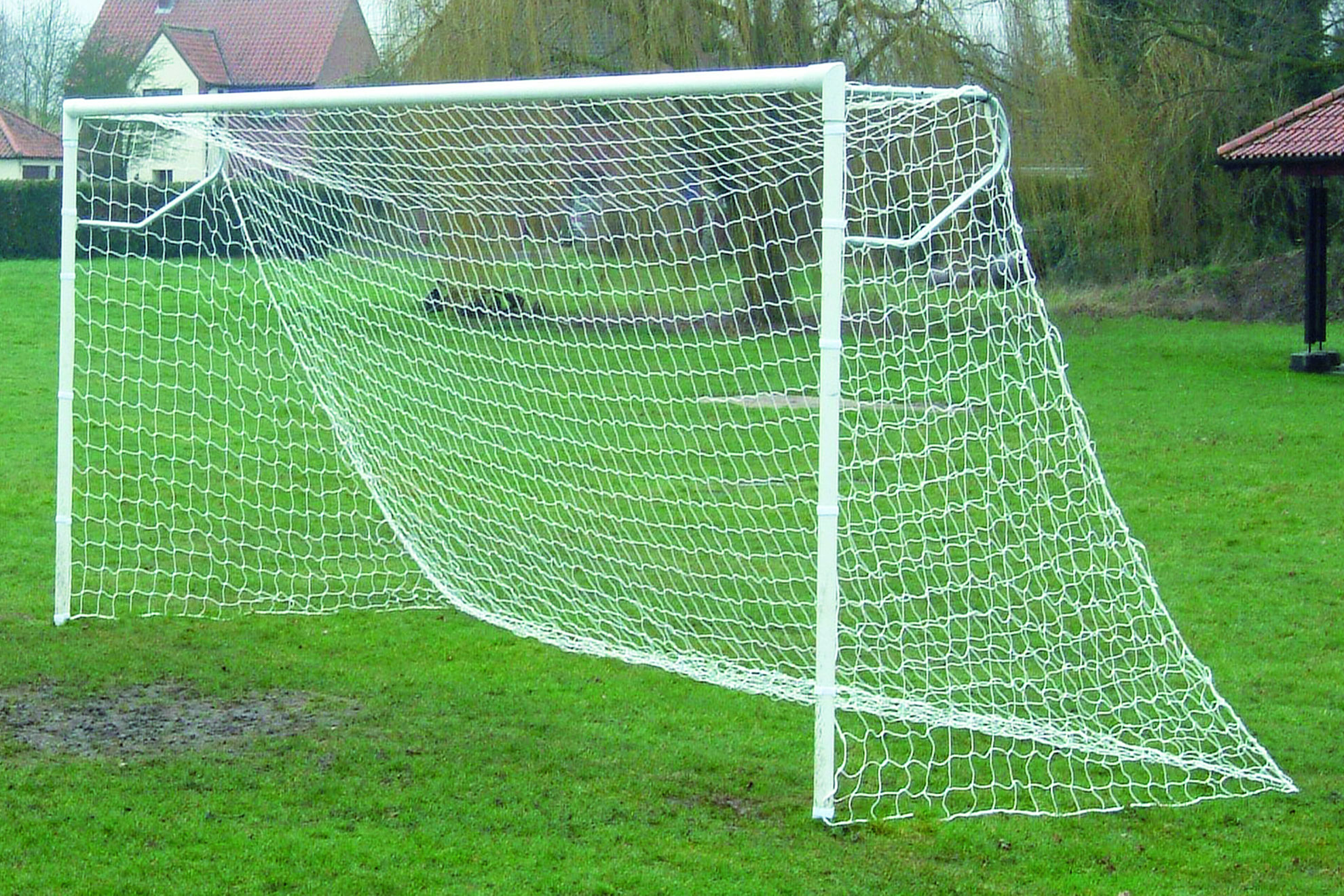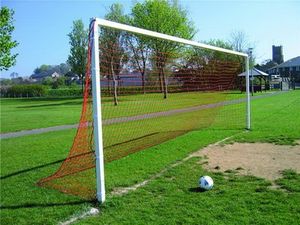A Brief History Of Football Nets
The modern football net as we know it was first developed in England in the early 1800s. Initially, nets were made out of rope or string, and were used to keep the ball in play. The first metal football net was patented by John D. Brodie in 1891. Brodie's design consisted of two metal hoops connected by a mesh netting. The netting would be stretched between two poles, and the ball could be played off the net.
Football goal nets were first used in England in 1882, when they were installed at Bramall Lane, the home of Sheffield United. The nets were made of rope and were placed at each end of the pitch. They were used to prevent the ball from going out of play and to stop players from running into the stands.
Who Was John Alexander Brodie?
Brodie was a good athlete who played rugby and golf. He claimed that the goal net, which he created for use in football matches in 1889, was the most proud of all his inventions.
The John A. Brodie company, which was based in London, England, manufactured a wide range of sports equipment, including footballs, cricket balls, golf clubs and tennis racquets. The company also supplied the FA with goal nets for Wembley Stadium.
Football Nets in England
The FA required all goal posts to be fitted with nets from 1891 onwards. This was to prevent spectators from being hit by the ball, and to keep the ball in play.
The first recorded use of football nets in a match was on 8 October 1887, when Preston North End beat Hyde 26-0 in a friendly match. The nets were made of hemp and cost four shillings each.
In 1888 , the FA published its first set of rules for football, which included the use of goal nets. The law stated that: "A goal shall be scored when the ball is sent between the posts and under the crossbar, provided that no player has touched it beforehand."
Nets became compulsory in all Football League and FA Cup matches from the 1891-92 season.
Football netting were made of hemp until the early 20th century, when they were replaced by nets made of nylon. The first recorded use of nylon football nets was in a match between Arsenal and Chelsea on 27 December 1934.

Wembley Stadium and the John A. Brodie Company
In 1923, the John A. Brodie company supplied Wembley Stadium with 60 sets of goal posts and nets. The nets were made of hemp and cost four shillings each. They were fixed to the posts with metal eyelets and hooks. The FA required all goalposts to be fitted with nets from 1891 onwards.
Goal Posts
The size of goalposts and nets has changed several times over the years.
All the way back in 1801, a football goal was made by simply putting two sticks into the ground two or three feet apart, marking out an imaginary goal line, initially with no crossbar or height restriction.
Later on, in 1863, the FA (Football Association) stated that goalposts must be 24 feet (7.32 metres) wide, which is still the same today. It wasn't then until a few years later, in 1865, that a crossbar was introduced to the goal posts, using tape 8 feet above ground.
Tape crossbars were then replaced with wooden crossbars, still keeping in line with the original 8 feet height.
Fast forward to the modern day, and the goals are made up of white posts and a crossbar, with posts measuring 8ft x 24ft (2.44 m x 7.32 m) and the crossbar 8ft (2.44 m) above ground, so this same size is still being used today for senior and professional football.
Square Goal Posts
The first recorded use of square goalposts was in a match between Crystal Palace and Millwall on 14 February 1925. The match was played at Selhurst Park, the home of Crystal Palace. The goals were made of wood and were 8 feet (2.44 metres) wide and 8 feet 2 inches (2.49 metres) high. The match ended in a 1-1 draw.
Modern Football Nets
Modern football nets are made of polypropylene, a synthetic plastic. They are UV-resistant and rot-proof. They are also much lighter than the hemp nets that were used in the past.
They are 24 feet (7.32 metres) wide and 8 feet (2.44 metres) high to fit the size of senior goal posts, and approximately 2 metres deep.
How Are Football Nets Attached To The Goal Posts?
Football nets are attached to the goal posts with hooks, clips or velcro. Hooks are the most common type of attachment. They are made of plastic so they can break off if a player gets stuck in them.
Velcro is a type of fabric that can be attached and detached easily. It is often used to fasten football netting to the goal posts.
Conclusion
Thanks for reading our article on the history of football goal nets. We hope you found it interesting and informative.
If you are looking for your very own football nets, Huck Nets can supply you with nets that are made of high-quality materials and are built to last. We offer a wide range of sizes and styles to suit all budgets and requirements. Contact us today to find out more.
FAQs
The net is there to stop the ball from going out of play. It also makes it easier to score goals. Football nets are usually made of polypropylene, a synthetic plastic. They can also be made of metal or aluminium. The size of a football net is 24 feet (7.32 metres) wide and 8 feet (2.44 metres) high, and approximately 2 metres deep. Football nets are usually attached to the goal posts with hooks, clips or velcro.Why is there a net in football?
What are football nets made of?
What is the size of a football net?
How are football nets attached to the goal posts?

